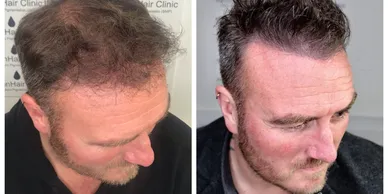Scalp Micropigmentation over a quick span of time has emerged as a leading non-surgical solution for pattern baldness. Unlike hair transplants or other chemical treatments, It offers a cosmetic fix that creates the illusion of hair through the precise placement of pigments. It is gaining popularity due to the safe, effective, and realistic outcomes, which generally last longer and it friendly to different skin textures.
1. Non-surgical and Low-Risk Procedure
One of the primary reasons why SMP is considered safe is its nature of application. The process includes using microneedles to apply natural pigment on the top layer of the scalp. There are no risks or damage associated such as scarring, infection, or a protracted recovery because there is no cutting, stitching, or transplantation. It is a far safer option than surgery because it doesn't change the structure of the scalp.
2. Fast and lasting Outcomes
Soon after the treatments, MP produces visible results of Hair pigmentation, such as a closer-shaven hairline or a fuller scalp. It offers immediate, consistent, and realistic-looking results when compared to other therapies or drug usage that take months and have variable results. Additionally, the pigments used in micropigmentation are made to last, fading naturally over a number of years without causing severe discoloration.
3. Suitable for a variety of candidates
Micropigmentation is effective for both men and women, regardless of the stage of baldness or hair type. People with receding hairlines, thinning hair, or even scalp scarring benefit greatly from it. Other than being a safer option the technique can be tailored to each client's unique head shape, skin tone, and personal style, making it a flexible and inclusive choice.
In conclusion
Because of its non-surgical method, quick results, and suitability for different people, SMP stands out as a safe and efficient treatment for pattern baldness. Micropigmentation has come out as a more popular option for people looking for a low-maintenance, confidence-boosting substitute for standard hair restoration.





Comments